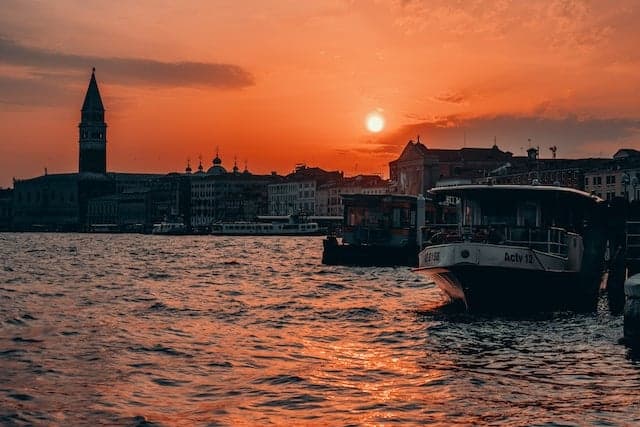Explained: When do Italians switch from buongiorno to buonasera?

At which time of day should you start greeting people in Italian with a 'buonasera' instead of 'buongiorno'? There's often confusion about the timing, but knowing when to switch is more straightforward than it might seem.
Using the two common Italian greetings buongiorno and buonasera ('good day' and 'good evening') could not be any more simple in theory.
But at what time of day does the greeting change? Language learners are often uncertain, and readers contacted The Local in response to a recent article on the topic of Italian greetings to tell us that it seems to vary enormously among the Italians they know.
One reader told us a relative in rural Basilicata insists on switching to buonasera immediately after midday, while another in Puglia said the greetings change after the afternoon riposo, or siesta, when shops and businesses reopen at around 4pm.
READ ALSO: Buongiorno, buonasera, buonanotte: How to greet people like a local in Italian
So what exactly is the rule, and how does it generally tend to apply? After all, as seasoned language learners know, learning in books and learning in real life are often two very different things.
Nicholas Stocco, founder of online private language school, Italiano con Nico, says differences from region to region could well be the main factor.
“It varies a lot depending on different aspects, but we can generally say that it depends on the light,” Nico, who is originally from Veneto, explains.
“Buongiorno is always used before the sunset and buonasera after it or very close to it."
For this reason "you can easily hear 'buonasera' in Milan at 4pm on December 30th because it's already dark, but not in the south in July at the same time.”
He adds that there are no direct rules on when the transition from buongiorno to buonasera begins, but it’s important to note that buongiorno is specifically used for during the daylight hours.
READ ALSO: The top ten Italian words that just don't translate into English
“Exceptions to this rule are phrases like buon mattino (good morning) and buon pomeriggio (good afternoon) but they’re rarely used.”
Language teacher Francesca from another online private language school, Italianando, agrees.
Hailing from Italy’s south, she says: “Sometimes we say buon pomeriggio between 3pm and 5pm, but it’s quite rare as we tend to use only buonasera or buongiorno.
“There isn’t a specific time for buongiorno and buonasera though. I would say use the latter when it is dark.”
As long as you don’t use buonasera when it’s light, you should be fine.
See more in The Local's Italian language section.
Comments (1)
See Also
Using the two common Italian greetings buongiorno and buonasera ('good day' and 'good evening') could not be any more simple in theory.
But at what time of day does the greeting change? Language learners are often uncertain, and readers contacted The Local in response to a recent article on the topic of Italian greetings to tell us that it seems to vary enormously among the Italians they know.
One reader told us a relative in rural Basilicata insists on switching to buonasera immediately after midday, while another in Puglia said the greetings change after the afternoon riposo, or siesta, when shops and businesses reopen at around 4pm.
READ ALSO: Buongiorno, buonasera, buonanotte: How to greet people like a local in Italian
So what exactly is the rule, and how does it generally tend to apply? After all, as seasoned language learners know, learning in books and learning in real life are often two very different things.
Nicholas Stocco, founder of online private language school, Italiano con Nico, says differences from region to region could well be the main factor.
“It varies a lot depending on different aspects, but we can generally say that it depends on the light,” Nico, who is originally from Veneto, explains.
“Buongiorno is always used before the sunset and buonasera after it or very close to it."
For this reason "you can easily hear 'buonasera' in Milan at 4pm on December 30th because it's already dark, but not in the south in July at the same time.”
He adds that there are no direct rules on when the transition from buongiorno to buonasera begins, but it’s important to note that buongiorno is specifically used for during the daylight hours.
READ ALSO: The top ten Italian words that just don't translate into English
“Exceptions to this rule are phrases like buon mattino (good morning) and buon pomeriggio (good afternoon) but they’re rarely used.”
Language teacher Francesca from another online private language school, Italianando, agrees.
Hailing from Italy’s south, she says: “Sometimes we say buon pomeriggio between 3pm and 5pm, but it’s quite rare as we tend to use only buonasera or buongiorno.
“There isn’t a specific time for buongiorno and buonasera though. I would say use the latter when it is dark.”
As long as you don’t use buonasera when it’s light, you should be fine.
See more in The Local's Italian language section.
Join the conversation in our comments section below. Share your own views and experience and if you have a question or suggestion for our journalists then email us at [email protected].
Please keep comments civil, constructive and on topic – and make sure to read our terms of use before getting involved.
Please log in here to leave a comment.